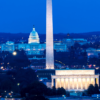Wars never slip perfectly into cleanly-cut templates.
On a burning Spring afternoon on the edge of Gaza, a mother moves slowly past bomb shelters erected inside a kindergarten’s playground. Years ago, she decided to move into a kibbutz – a communal settlement in Israel, typically a farm focused on agriculture – in the hopes of a better life. The years that have passed have been punctuated by frequent sirens and rockets falling on her front lawn, panic-induced moments scooping up her son and running for their lives to make it underground in less than fifteen seconds.
Trauma grips every inch of her tiny frame, reminding me that she, too – much like the multitude of mothers and her Palestinian brethren on the other side of the concrete barriers – pain is etched into the region’s DNA.
It is always a challenge to write about this neighborhood, and no matter what stories and statistics you draw upon, there will be others who see things from a vehemently different lens. Still, I cannot help but deduce that the threat in this tiny wedge of land is one of many parcels bound to be worsened by a cash-flooded, emboldened Iran, as the loose threads of connection hardened into knots that can no longer be unraveled with diplomacy but will need to be blown apart.
Nevertheless, a United States return to the 2015 Joint Comprehensive Plan of Action (JCPOA) looms large. As of the time of this writing, Tehran has not accepted the re-jigged terms set forth by the U.S. and its partners, the United Kingdom, China, Russia, France, and Germany, but analysts and experts anticipate that the agreement, better known as Obama’s Iran Deal, could be revived any day now.

Yet weighing up the Islamic Republic’s history of deception and denial on nuclear issues, it comes as no surprise most Israelis in the military, and government spheres view the cash deluge as a bad deal not only for Israel but for the world. Does anyone honestly believe that Tehran will spend the big bucks on building roads and hospitals and supporting the millions of impoverished Iranians? Moreover, is rewarding the world’s biggest state sponsor of terrorism – all while they plot to assassinate former Trump administration critics – are wise move on the world stage?
In exchange for billions of dollars in sanctions alleviation, Iran is supposed to halt its nuclear program – at least for a decade – and allow international inspectors to survey known atomic sites. Aside from the sunset provisions of the 2015 deal, which will not stop nuclear ambitions but just slow them down, Tehran can lawfully expand enrichment to industrial levels by 2030. Under the terms, Iran is free to generate bomb-making materials rapidly and, in the meantime, develop ballistic missile capabilities to carry a nuclear warhead someday.
Iran already has the biggest ballistic missile depository in the region and stands to only improve accuracy and range in the upcoming years with much more money to do so. Moreover, the inspection process is not arbitrary – it must be planned ahead with coordinated permissions from Tehran officials. Military bases are also deemed “off limits” to the International Atomic Energy Agency, allowing the regime carte blanche to clean up and conceal potential violations.
Proponents of the JCPOA often argue that several other countries involved in persistent fighting with their neighbors bestow nuclear arsenals – think Russia and Pakistan. But for Israel, it is only Iran that has called for the complete obliteration of the Jewish state. And that is, understandably, deeply unsettling.
And if the regime’s historical strategies tell us anything, it is that they are perfectly content with playing the long game. Iran – intricately linked with Russia and China – does not necessarily need a deal with the West. Yet if it is to sign, it is likely that it will be on their terms.
The proliferation of Iran’s proxies throughout much of the Middle East is just as worrisome as Iran’s nuclear plans. While it is no secret that Iran backs a bevy of maleficent players, experts caution that there is a careful strategy at play – akin to the gradual development of a “Shia axis” against the more dominant Sunni sect.
For Israel, the most immediate and publicized threat geographically emanates from forces such as Hamas, the U.S-designated terrorist organization that governs the Gaza strip. The ceaseless conflict between the Arabs and Israelis is entrenched in a century-long territorial feud over the Holy Land. But more recently, the attacks have been instigated by Palestinian Islamic Jihad in the West Bank, intricately connected to the top tier of Tehran. If that tenant does not concern enough, the Iran-bolstered Islamic Jihad has its own beef with the more Muslim Brotherhood-aligned Hamas, further dividing Palestinian communities.
It is a painful situation for all sides of the equation: Israelis with their own war-induced PTSD struggles and, of course, the impoverished, frustrated and increasingly extreme factions of the Palestinian population trapped in Gaza without prospects, freedom, or the belief that something better will come any time soon.
The United Nations routinely condemns Israel for “escalating attacks against Palestinian civil society in the occupied West Bank,” depicting its actions as “illegal and unacceptable.”
The nature of who is to blame is a deeply divided one, and those on both the pro and anti-Israel sides present compelling cases. Nevertheless, one thing that cannot be denied is that the outcome is a patchwork of desperation, particularly among the young, who face 70 percent unemployment rates. With nothing to hope for, there is nothing left to lose, and the violence protracts.
Meanwhile, the growing presence of Iran’s most battle-hardened surrogate, Lebanese Hezbollah, appears to be just as concerning to Israeli military and government personnel. However, at least to my outside eye, it seems to stretch around every crevice of the Middle East.
And the faction makes little endeavor to conceal its existence and large-scale ambition. Like its financiers Iran, the 1985-founded outfit, has nothing but time to clock up a victory. Already fervent fundraisers, Hezbollah – one of the world’s greatest conventional militaries despite its insurgency status – stands only to gain from a JCPOA financial influx.
In a remote pocket of Israel’s north, where Israel and Lebanon meet, Hezbollah has built an impressive tunnel more than two hundred feet below the earth leading into Israel terrain. Contractors thought the depth would drown out the drilling; only locals in the arid village heard and reported – with Israeli forces only launching an onslaught to drive them away when intel filtered through that Hezbollah was preparing to encroach on foreign terrain.
Hezbollah operatives can still be seen with the naked eye boldly mulling around the snake-coiled periphery, their identities well-known to the Israeli military, who casually determine no immediate threat from them.
Only this one sophisticated tunnel is one of many. A report released by the security research outfit the Alma Center last year illuminated an extensive underground network that “connects entire regions of Lebanon,” with some underpasses large enough to “allow pickup trucks with multi-barrel rocket launchers to fire, vanish and re-emerge miles away from where an attack was launched.”
In addition, Hezbollah has successfully utilized the chaos of the long-running Syrian civil war and ISIS insurgency to craftily take over traditionally Sunni swaths of the blood-spattered country against a backdrop of a distracted international community.
Take the Golan Heights. The area is a sleepy, exquisite tract of gushing streams and rolling hills that burnish green in the early fall and are dusted with snow as winter approaches, almost iambic in its stillness. Technically, it is a war zone – a war always in waiting, never really over. The entire Golan Heights once belonged to Syria (some critics contend it still does and refers to it as being under Israeli occupation) after two-thirds was captured by the Israeli Defense Forces in the Six-Day War of 1967.
A retired soldier with cracked hands and bright eyes points to the “Valley of Tears,” which he explains is in reference to the many men who died there in the “Arab versus Israeli” Yom Kippur war of 1973. The decades since remained comparatively quiet on the much-heated border until the brutal emanation of ISIS. The extreme Sunni militant group conquered the coveted Golan on the Syrian side in 2014, exchanging fire with Israeli forces. Eventually, forces loyal to Bashar al-Assad retook the terrain with the help of Russia and Iran and their proxy alliances.
Notably, the Shia-majority Hezbollah now occupies the once Sunni swath of cobbled homes and winding streets. The armed clique has constructed elaborate Shia mosques that shrill with the Call to Prayer five times a day, even though there are very few civilians in the area. This strikes me as powerful symbolism rather than practical actions. Across the once Sunni-majority nation of Syria, Iran has steadily bought up thousands of real estate infrastructure, religious centers, hospitals, schools, and universities to put forth its own teachings. Arab-named streets have been changed to Persian, and Shia holidays are celebrated triumphantly in traditionally Sunni pockets.
This type of raw documentation compels societies to face uncomfortable truths, and indeed, the deeper you dig into the weeds of Middle East foreign policy, the more disturbing the Iranian grand strategy becomes. Since the Iranian regime came to power in 1979, its objective has been for Iran to become a regional power and to restore the Shias as the rulers of the Muslim world. A linchpin of its blueprint is to construct and control a land corridor, sometimes called the Shiite Crescent, extending from Iran to the Mediterranean Sea.
Syria and Palestinian territories are just one pearl in the string of demographic re-arranging and encouraging internal discord among Sunni populations. The fortification of regional power requires Iran to continue arming and bolstering its mosaic of proxies from Hezbollah, Hamas and Islamic Jihad to the Houthi Rebels in Yemen, Shia militias in Iraq and Bashar al-Assad’s forces inside Syria. As well as dictating domestic and foreign policy to further their own interests in states outside its border, the hegemonic corridor can carve out influence that directly – and dangerously – jeopardizes Israel and the Gulf States, in addition to U.S. interests in the region.
Therefore, eternally easing economic sanctions on Iran, as per the JCPOA, in the trade for narrow-sighted and short-term constraints on nuclear ambitions only sets to embolden those millions already profusely suffering.
A re-kindled JCPOA also threatens to prolong and worsen the bloody war Russia has waged in Ukraine since launching an all-out invasion in the dwindling days of winter this year. Before the conflict, Moscow sought closer ties to the likes of Israel and the Gulf, who are united by their “common enemy,” that is Iran. Nonetheless, the western retaliation to the Russian onslaught propelled Moscow closer to Tehran, an ally that could help the Putin government circumvent sanctions. The Islamic Republic exports everything from drones to missiles to support the Kremlin’s battle efforts.
“It appears that President Biden would like to do a deal. Not so much because he wants to reverse Trump’s canceling of the JCPOA and restore what some saw as the crowning glory of the Obama Administration’s foreign policy, as it is, to plug the hole for Europe resulting from its loss of Russian oil and natural gas after the invasion of Ukraine, and replace it with Iranian oil and natural gas,” John Wood, a longtime Iran geopolitical and security analyst, explains. “In so doing, Biden will be able to claim not only having halted the Iranian nuclear program, which is on the cusp of a real breakout.”
Moreover, in light of its deploying at Natanz and Fordow of IR-6 centrifuges, which means it’s just months away from having sufficient enriched fissile material to build a nuke; a deal could be sold to the West as a means to provide Europe with the necessary energy to heat their homes and fuel their factories this winter, both of which, especially in Germany, are in the process of being turned off. This could equate to growing support for a JCPOA return as the temperature drops and less interest in backing Ukraine – hence more power in the pockets of Russia, Iran, and their congregation of allies.
“The ends justify the means,” Wood stresses. “Pragmatism once again will win out over principle, and therefore, de facto rewarding Iran, the largest sponsor of terrorism on the planet.”
And with Russia’s resources and focus directed to Ukraine, Iran and its proxies have stealthily moved forward to take over what were once Russian positions and areas of dominance in dilapidated Syria.
For its part, Israel – plagued by political instability and staring down the barrel of a fresh slew of elections – must prepare itself for conflict from all sides of the equation. This means pouring wads of energy and income into developing innovative weapons systems, often in partnership with the United States.
The eponymous “Iron Dome” has long been the center of weaponry chit-chat, with a capability to intercept short-range rockets such as Katyushas and Qassams, boasting a more than 90 percent success rate.
However, its lesser-known big brother, “David’s Sling” (previously termed the Magic Wand), appears poised to counter what could be an inevitable Iranian strike someday. The weapons system is designed to deflect medium-range ballistic weapons such as Hezbollah’s M-600 or cruise missiles fired 25 miles away.
However, the glaring problem that Israel still faces is being overwhelmed by Iranian intermediaries all at once in every direction and launching offensives to disrupt potential nuclear development.
“The challenge for Israel is the size and dispersed nature of the Iranian nuclear program – over 50 sites spread all over the country. The principal targets of Natanz, Fordow, Isfahan, Arak and Bushehr are in the center and the south of the country; that’s a long way from Israel,” Wood explains. “For example, Tel Aviv to Bushehr is 851 nautical miles. To get there, you will most probably have to fly over Syria and Iraq, as well as Iran. In other words, it is highly likely that Iran will know you are coming.”
And because it is 1,702 miles round trip, you will need to refuel in the air. This puts a practical constraint on how many aircraft Israel can field and depends on how many air-refueling planes they have ready for use.
“When you get to the target, you are going to be confronted by an array of SAM systems – Tor-M1, Pantsyr-S1 and S-300s, with a probability of kill of 90 percent, as well as dozens of MANPADS, such as the Strela. It is to be noted that the key facilities of Fordow and Natanz are primarily underground so that even so-called “bunker busters” will enjoy limited success,” Wood continues. “This all translates into an air campaign and not a single surgical strike. Consequently, Israeli planners will have to consider what the Israeli people will support. What happens if Israel loses, say, 40 percent of its aircraft and only partially degrades the Iranian nuclear complex.”
Nevertheless, experts and analysts can pontificate all day about what might happen, when it might happen and how it may happen – but it is not lost on ordinary citizens that nobody really knows. If there is anything that unites Israelis, it is that life goes on regardless of the ongoing tensions that slice the air.
And if there is anything that unites all citizens, it is that there are everyday things – the economy and jobs and daily survival – that zap our attention and matter most when we go to the polls.
“We don’t think about Iran; it is far down the list of the things we worry about each morning,” one friend explains with a sigh.”











